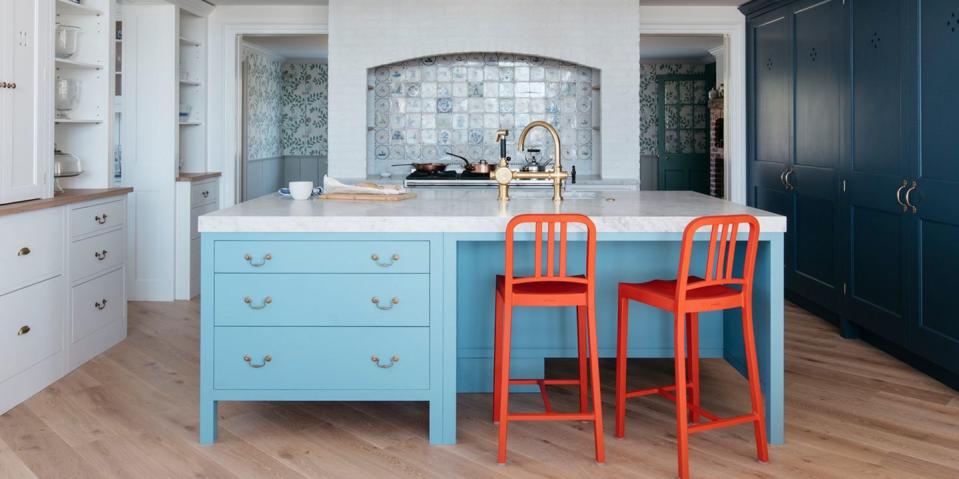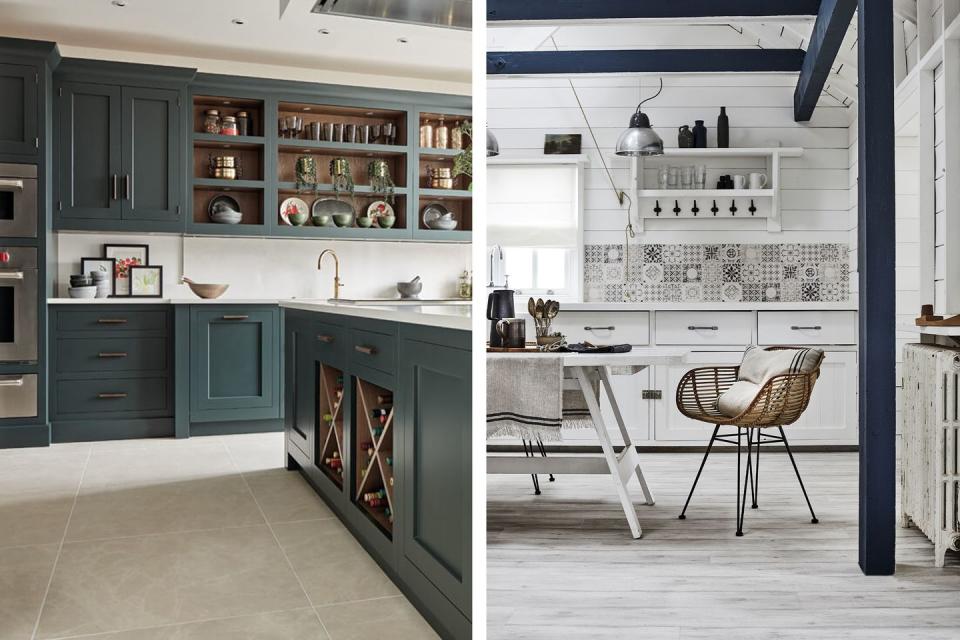How to increase natural light in your kitchen, by a kitchen designer

A kitchen that is flooded with natural light is on many homeowners' wish lists. Maximising daylight makes a kitchen feel bigger, brighter, and more welcoming, and it makes your choice of colour palette more vibrant. It’s also a huge selling point for new buyers.
Short of a full remodel or a costly extension, there are some clever design tricks that can increase the natural light in your kitchen. And as we move through the darkest season of the year, it's important that your kitchen remains light and airy, even as the nights draw in.
Tom Howley, Design Director of the eponymous kitchen company, shares his expert advice on how to increase the natural light in your kitchen…
Install glass cabinetry

'Glass is an excellent finish for kitchens. Not only do glazed cabinets break up the monotony of repetitive solid doors – especially in large spaces – they maximise the flow of light into darker corners,' says Tom. 'Having glass-fronted doors is as good as open shelving when it comes to displaying your prized pieces. They're also fantastic when accessing everyday essentials allowing you to see what you have and where you've put things.
'Islands take up a large amount of space so having glass-fronted doors can break-up the block. Glass inserts create an illusion of depth and increase the perception of square footage, which is a bonus in smaller kitchens. A traditional Shaker style kitchen would always have a dresser for crockery and copperware, so glazing in an island that’s inspired by Shaker-style design recreates the look in a contemporary way.'
Work surfaces can bounce light around a kitchen

Your work surfaces take up considerable space in the kitchen, so don't waste an opportunity to introduce light-reflecting finishes. A bright white marble is a brilliant choice, especially when used in large blocks, like in this bespoke kitchen by Plain English.
'There is a plethora of smart ways to make your kitchen feel spacious. To keep an open feel, choose light paint colours and reflective materials such as bright quartz or a mirrored splashback,' says Tom.
Metallic finishes will have the same effect, so opt for a silver finish on your larger appliances – this works brilliantly if you have a full-height double fridge.
Neutral colours create the effect of brightness

'Lighter wood finishes and paint colours work well to expand the perceived space of your kitchen. Pair light tones with very light-coloured countertops, and your kitchen will look spacious and airy. If you do decide on floor to ceiling cabinets, these should only be fitted with glass door display cabinets. This will open up the space in a way that opaque cabinetry will not in a smaller kitchen,' says Tom. 'Soft shades of warm whites and earthy beige work well on their own but even better when used in a two-tone scheme.
'If you’re using lighter colours to enhance your space then try painting your walls in the same shade, this will focus your eye on the whole area, allowing it to feel larger and lighter,' Tom adds.
Choose light-reflecting materials for the floor

We know that dark colours absorb light, and the same rule applies for flooring.
Whilst a bright white tile might appear overly clinical in a kitchen, polished cream stone or a light grey-toned wood veneer will have the same effect of reflecting light back into your room.
And a final thought for practicality – flooring with a lot of texture or varying depths of colour (this Carpetright laminate floor is a great example) will be more forgiving when it comes to marks or staining, an inevitability in a busy family kitchen.
Follow House Beautiful on Instagram.
You Might Also Like

 Yahoo Finance
Yahoo Finance 
